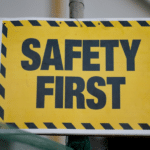The success of commercial ventures is largely dependent on proposal management, which also lays the foundation for gaining new clients and expanding initiatives. Fundamentally, it entails organizing a wide range of activities, from the first request for bids to the last filing of an expertly prepared document. This crucial business activity is defined by the interaction of strategy, writing, design, and teamwork. It takes skill to navigate through its complexity and a deep comprehension of what good proposal management means. In this piece, we explore the essential components that make up a strong proposal management plan.
Understanding the Fundamentals of Proposal Management

Colleagues at a meeting, discussing their plans and projects for the company and the process of proposal management.
Proposal management is an intricate art, delicately balancing the needs of diverse stakeholders while crafting a compelling argument for a business’s offerings. Beginning with a thorough grasp of the client’s requirements, it aims to demonstrate how one’s products or services uniquely satisfy those needs, articulating value and differentiation effectively. The managerial aspect involves assembling and coordinating a team to ensure each component of the proposal meets the highest standards, from writing to design. Navigating complex RFP instructions is crucial, adhering strictly to guidelines and formatting rules to avoid disqualification. For companies committed to refining their solicitation strategy, the process of proposal management represents a continuous cycle of planning, execution, revision, and learning, indispensable for securing contracts and fostering business growth.
Key Steps in the Proposal Development Lifecycle
The proposal development lifecycle begins with the pre-proposal phase, involving opportunity identification and assessment for alignment with company goals. Skipping this stage can risk misalignments. Upon identifying a suitable opportunity, a proposal team is assembled to draft an initial outline, constructing a persuasive narrative around the company’s capabilities and value proposition. The drafting process is iterative, emphasizing clarity and conciseness to maximize persuasiveness. Finally, in the submission and follow-up phase, agility and responsiveness are crucial for addressing queries and providing additional information to maintain a competitive edge post-submission.
Essential Tools and Software for Streamlining Proposal Creation
Efficient proposal management in the digital age necessitates leveraging technology, with an array of tools and software available to facilitate collaboration, document management, and the creation of visually appealing proposals. These technologies streamline workflows, enhance productivity, and offer features such as templates and content libraries for maintaining consistency and saving time. Collaboration tools enable synchronous work regardless of location, improving version control, transparency, and feedback cycles, resulting in profound impacts on proposal quality and turnaround time. However, selecting the right tools requires understanding the team’s specific needs, proposal types, and considerations like integration, scalability, and ease of use.
Ideal Practices for Effective Proposal Team Collaboration

A man standing in front of a wall with organized sticky notes, brainstorming an idea.
Highly effective proposal teams thrive on collaboration and effective communication, which begins with establishing clear roles and responsibilities upfront to minimize overlaps and conflicts. Regular check-ins are crucial for maintaining momentum, aligning efforts, and addressing challenges collectively. Cultivating a culture of feedback allows for constructive criticism and peer reviews, enhancing proposal quality and team morale. Leveraging shared workspaces and collaborative tools streamlines communication and document accessibility, optimizing the proposal production process for polished and competitive submissions.
Measuring Success and Continuously Improving Proposal Processes
Performance measurement serves as the guiding compass for the continuous improvement of proposal processes, allowing companies to refine their approach based on outcomes such as wins and losses. Analyzing these outcomes, understanding client feedback, and conducting internal reviews help identify areas for enhancement, whether in tools, workflows, or team collaboration. Additionally, ongoing training and development ensure the proposal team remains adaptive and innovative in their strategies, essential for navigating evolving market trends and technologies
Overall, mastering the art of proposal management requires a thorough understanding of its elements, the adoption of collaborative ideal practices, judicious use of technology, and a commitment to continual improvement. With these strategies in place, businesses can generate compelling proposals, win new projects, and achieve long-term success in their respective industries.
Published by: Nelly Chavez



















